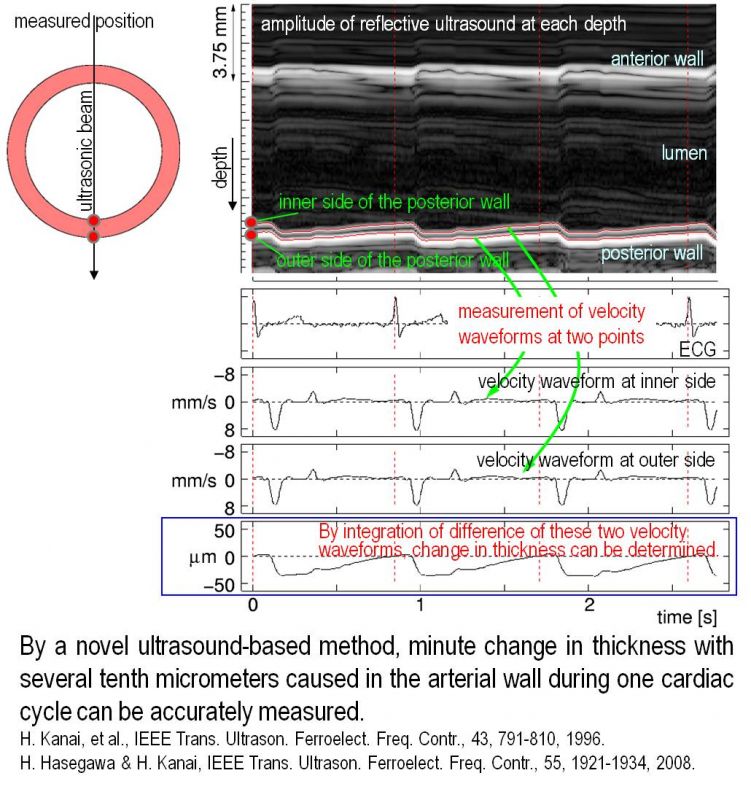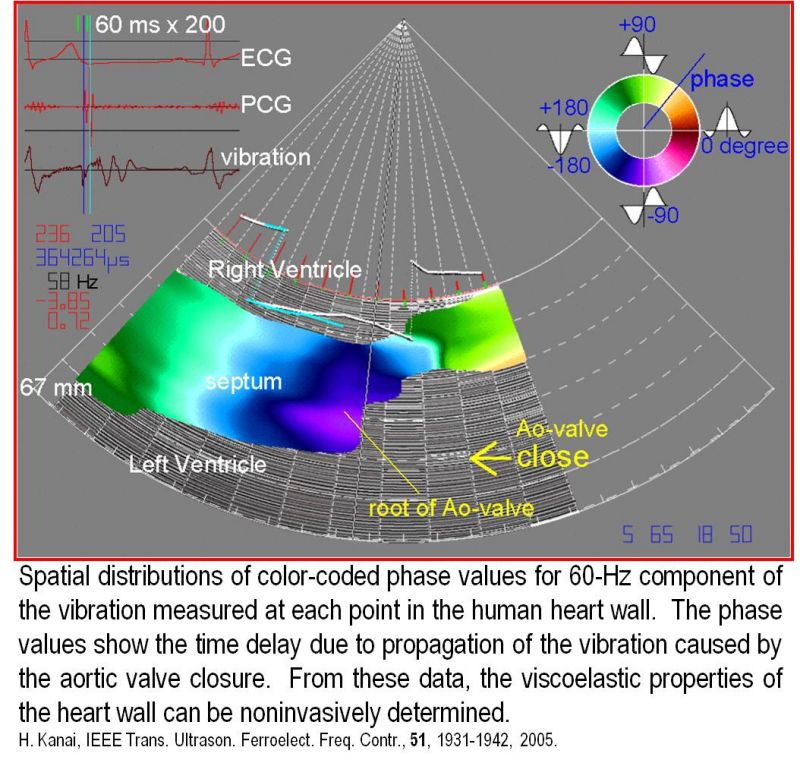 Noninvasive Ultrasonic Measurement of Dynamic Properties of Heart and Arteries
Noninvasive Ultrasonic Measurement of Dynamic Properties of Heart and Arteries
update:2020/06/16
- Features and Uniqueness
-
- Complexity of the cardiac contraction sequence is still not fully understood because the dynamic mechanical excitation process, which directly correlates with contraction, cannot be accurately measured by CT, MRI, SPECT, or conventional ultrasound. By developing a noninvasive novel imaging modality with high temporal and spatial resolutions (US patent 5840028), we have detected the minute mechanical response (velocity component) to the propagation of the action potential in the human heart or to detect the propagation of the vibrations along the heart wall caused by the valve closure (Fig. 2).
- By applying the same procedure to the human arteries, the regional change in wall thickness caused during one cardiac cycle can be measured with high spatial resolution (Fig. 1). From the measurement, the regional elasticity of tissue surrounding atherosclerotic plaque can be determined. By comparing the pathological findings with the distribution of elasticity, elasticity of lipid and that of fibrous tissue were determined. Thus, each point inside the plaque is classified into lipid or fibrous tissue using transcutaneous ultrasound (Fig. 3).
- Practical Application
-
This novel method offers potential as a diagnostic technique for detection of plaque vulnerability with high spatial resolution.
We are prepared to provide academic consultations to companies interested in our research. - Keywords
Researchers
Graduate School of Engineering
Hiroshi Kanai, Specially Appointed Professor(Research)
Ph.D.


 Medical
Medical
 Life Sciences
Life Sciences
 Information Communication
Information Communication
 Environment
Environment
 Nanotechnology / Materials
Nanotechnology / Materials
 Energy
Energy
 Manufacturing Technology
Manufacturing Technology
 Social Infrastructure
Social Infrastructure
 Frontier
Frontier




